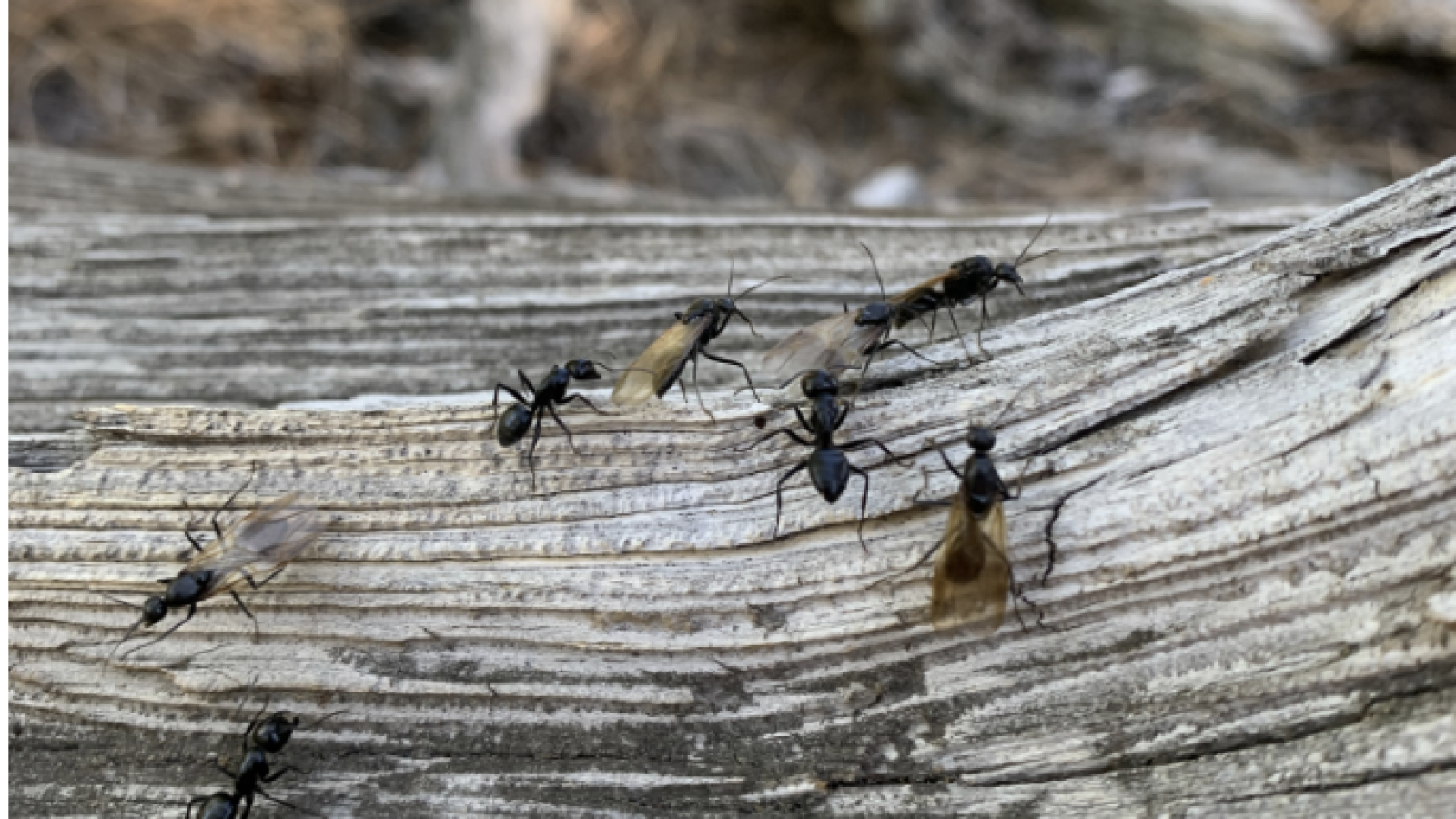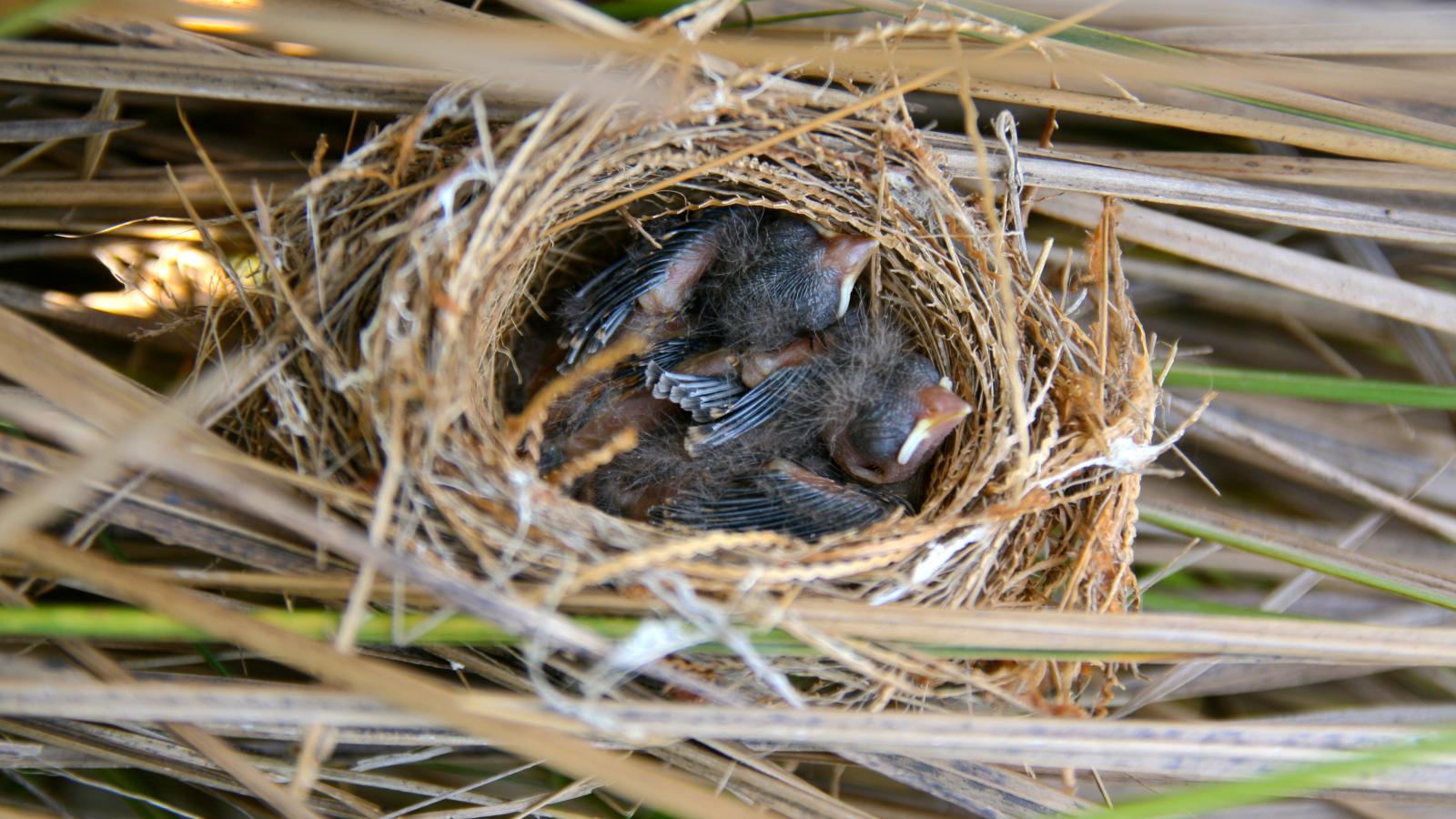
Between 2-4 October 2015, students enrolled in Plant Systematics (EBIO 4520/5520) traveled to Black Canyon of the Gunnison National Park for a botany camping trip. Participatory were: Reese Beeler, Ryan Byrne, Keric Lamb, Mandy Malone, Kelsey McCoy, Matt Schreiber, and Sydney Sharek along with Erin Tripp (course instructor) and Matt Sharples (teaching assistant). A botany fieldtrip anywhere in October in Colorado is risky, given we hit the end of the growing season a month ago. We needed a site that was sheltered from early frosts and cold weather, and speculated that the depths of a deep canyon might provide such refuge for a few lingering plants in flower or fruit.
We were right! On Friday afternoon, we punched it down to Black Canyon of the Gunnison, arriving late but not too late for homemade tostadas. We stayed at the North Rim Campground, which is a very small, funky, climbers favorite. The Black Canyon is without doubt one of the most dramatic landscapes in Colorado and indeed much of the west. It derives its name from the darkness created by the sheer walls, narrow width, and tremendous depth, which limit sunlight illumination of some portions of the canyon bottom to less than 30 minutes on any given day. Over the last 2 million years of Earth's history, the canyon was carved out by the massive and in some parts very remote Gunnison River. Other canyons of the West are longer, and some are deeper, but none combine the length, depth, and sheerness of Black Canyon. 
We awoke Saturday morning to start our long descent down quite the extreme slope - only 1.75 miles in length but 2,000 ft. vertical descent - a Class 3 scramble affectionately known as the “S.O.B route”. This is one of the only routes in the entire area that can be used to reach the bottom of the canyon without advanced, technical climbing. Conveniently, it leaves directly from the campground. We took our time descending, learning the dominant plant community along the way: Artemesia tridenta ta (Sagebrush), Juniperus osteosperma (Utah Juniper), Quercus gambelii (Gambel Oak), Amelanchier alnifolia (serviceberry), Cercocarpus ledifolius (Mountain Mahogany), and Pinus edulis (Pinyon Pine - one of many sources of pine nuts, which are actually not nuts but rather seeds). The bottom of the canyon was lush and thrilling - we learned several additional species as a group before setting out on our own in various directions. Many of us took a welcomed dip into the Gunnison - a perfect 58˚F.
ta (Sagebrush), Juniperus osteosperma (Utah Juniper), Quercus gambelii (Gambel Oak), Amelanchier alnifolia (serviceberry), Cercocarpus ledifolius (Mountain Mahogany), and Pinus edulis (Pinyon Pine - one of many sources of pine nuts, which are actually not nuts but rather seeds). The bottom of the canyon was lush and thrilling - we learned several additional species as a group before setting out on our own in various directions. Many of us took a welcomed dip into the Gunnison - a perfect 58˚F.
We reached camp around 5 pm. The weather was balmy - mid 60s and so delightful. We spent the next 2 hours sitting at the picnic table keying various plants we saw at the bottom of the gorge. Among them was Petrophytum caespitosum (Rock Spiraea), which grows “on precipitous and often inaccessible canyon walls” (in Dr. Bill Weber’s words) and Polanisia dodecandra (Clammyweed) - a curious member of the caper family (Capparaceae) and one that represents a new plant record for Montrose County! Dinner was a botanical medley (squash and zucchini [Cucurbitaceae], shallots & garlic [Alliaceae], carrots [Apiaceae], potatoes [Solanaceae]), lightly tossed with olive oil [Oleaceae], salt, black pepper [Piperaceae], and chipotle powder [Solanaceae again…sigh], wrapped in foil then cooked on hot embers in the fire for a perfect 25 minutes. We all had a solid night’s rest before heading home the next morning.
The journey home: complete with blazing aspens and a flat tire with no easy means for a fix. But we managed with a tire plug and the compressor of a kind stranger. That's life as a biologist: never a dull moment.
Story by Erin Tripp.













